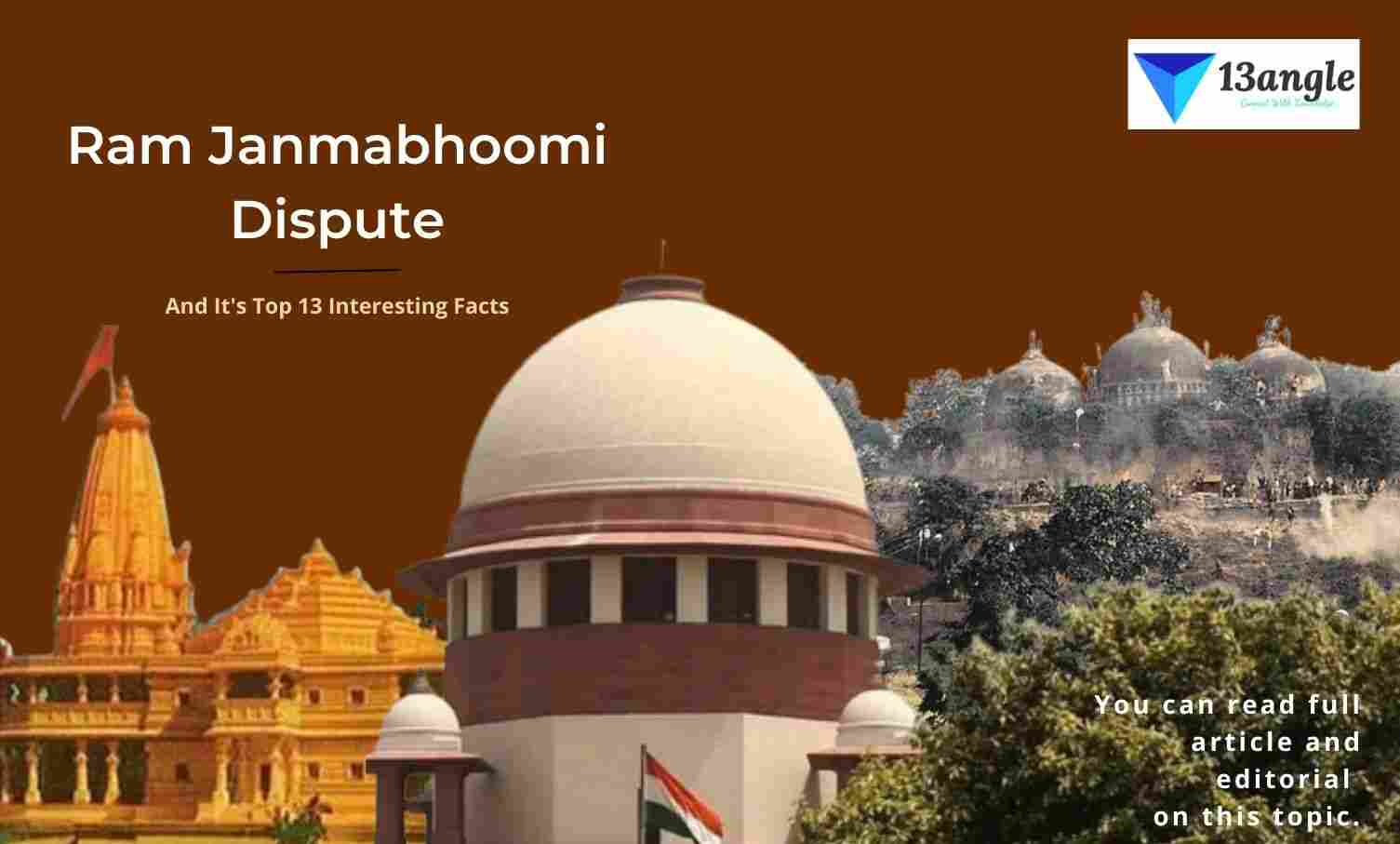- Umang Sagar
- Recent article, Religious
Ram Janmabhoomi Dispute
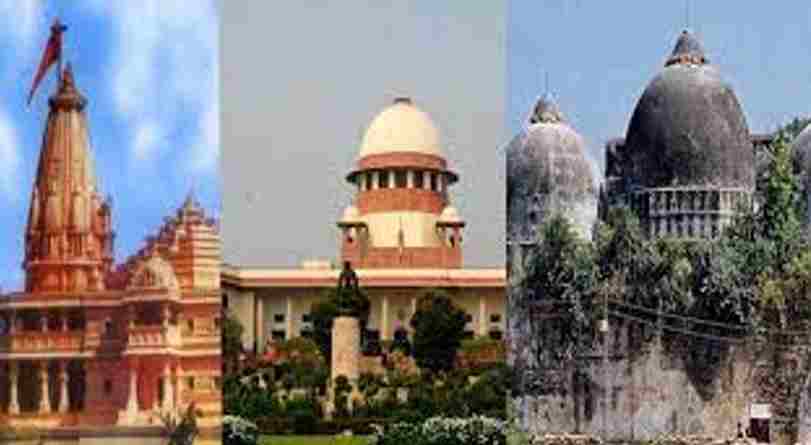
Introduction
The Ayodhya dispute is a political, historical, and socio-religious conflict in India that revolves around a tract of land in Ayodhya, Uttar Pradesh. The problems concern the possession of a site that Hindus believe is the birthplace of their deity Rama, the history and placement of the Babri Masjid on the site, and whether or not a prior Hindu temple was demolished or changed to establish the Babri Masjid.
The Babri Masjid, a mosque there, was demolished during a political rally on December 6, 1992, sparking riots across the Indian subcontinent. Several prior efforts were foiled, one of which resulted in the 1990 Ayodhya gunfire incident.
A following land title lawsuit was filed at the Allahabad High Court, and the judgment was handed down on September 30, 2010. The Allahabad High Court’s three judges ruled that the 2.77 acres of Ayodhya land should be divided into three parts, with one third going to the Ram Lalla or Infant Rama, as represented by the Vishva Hindu Parishad, one third to the Uttar Pradesh Sunni Central Waqf Board, and the remaining third to Nirmohi Akhara, a Hindu religious denomination.
A Brief Past About The Ayodhya Case

- One of the longest court fights in India’s history has just come to an end. 134 years ago, the first case in the Ayodhya title dispute was filed. It has worked its way up through the legal system, from the Faizabad Civil Court to the Allahabad High Court’s Lucknow Bench to theSupreme Court, even as India transitioned from a British colony to an independent republic with its own fault lines.
1. Prior to the Declaration of Independence
The initial legal history of the Ayodhya issue stems from 1858. On November 30, 1858, a Mohammad Salim filed an FIR against a group of Nihang Sikhs who had placed their Nishan inside the Babri mosque and inscribed “Ram.” They also did havan and puja rituals. Sheetal Dubey, the thanedar (the old station house office) of Avadh, confirmed the allegation in his report dated December 1, 1858, and even said that the Sikhs had built a Chabutra (platform). This was the first documented proof that Hindus lived not only in the outside courtyard but also in the inner courtyard.
The legal battle began in 1885 when Mahanth Raghubar Das filed a civil complaint in Faizabad against the Secretary of State for India in Council (No. 61/280). Das stated in his complaint that he was a Mahanth who lived at the Chabutra in the outer courtyard and that he should be allowed to build a temple there. The case was thrown out. A Civil Appeal (No. 27) was filed in 1886, challenging the 1885 ruling. FER Chamier, the District Judge of Faizabad, decided to visit the site before issuing the judgment. The appeal was later dismissed by him.
A second Civil Appeal (No. 122) was filed in response to the dismissal, but the court of Judicial Commissioner dismissed it as well. There was no legal movement in the case for the following 63 years. A riot broke out at Ayodhya in 1934, when Hindus demolished a part of the disputed site’s building. The British reconstructed the section.
2. Idols and key people
- Idols were discovered inside the mosque’s central dome during the nights of December 22nd and 23rd, 1949. Then, on December 23, Faizabad DM KK Nayar notified UP Chief Minister Govind Ballabh Pant that a group of Hindus had entered the spot while it was vacant and placed the idol. On the same day, an FIR was filed in the case, and the gates were shut. On December 29, the municipal magistrate issued an order under Section 145 CrPC attaching the entire property and appointing Priya Datt Ram, president of the Nagar Mahapalika, as a receiver. Priya Datt Ram took over as receiver a week later, on January 5, 1950.
Babri Masjid Architecture
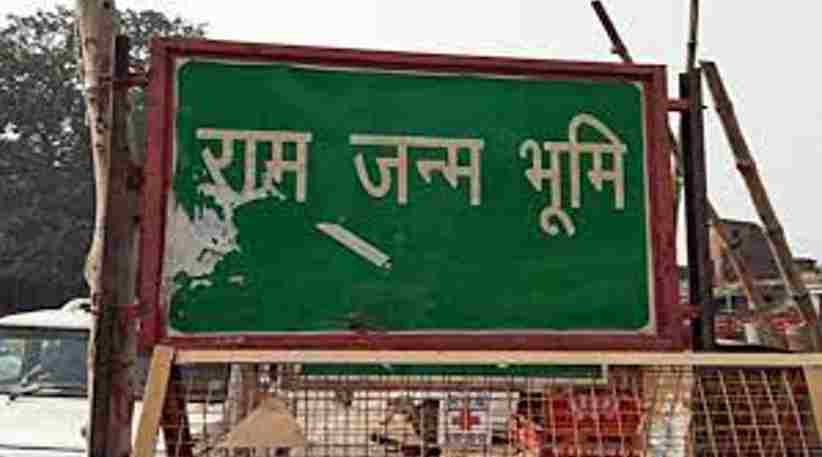
The Babri Masjid, also known as the Babur Mosque or the Baburi Mosque, and earlier known as the Masjid-iJanmasthan, is a mosque in Ayodhya, Uttar Pradesh, India. According to inscriptions on the site, it was erected by Mr. Babur, perhaps a bey serving under Mughal emperor Babur, in the year 935 of the Islamic calendar. It was one of three mosques claimed to have been built on Babur’s instructions in the 16th century, together with the mosques at Sambhal and Panipat. It was demolished in 1992 after decades of animosity between Muslims and Hindus over the site.
The mosque was built in the manner of the short-lived Lod dynasty, which came before the Mughals: it was tiny, with a single aisle design of three domed bays along the qiblah wall. The central bay’s doorway, a pshq indicating the building’s prominence and significance, was far taller than the side bays. The mosque’s location has been a point of disagreement between Muslims and Hindus, with the latter claiming that it was constructed on top of Ram Janmabhoomi, the Hindu god Rama’s birthplace. The earliest known confrontation between religious sects over the site occurred in 1853, during a period of sociopolitical upheaval in India.
Separate parts of the site were set up for Muslims and Hindus under the British raj, or direct British authority over the Indian subcontinent. Images of Rama were introduced inside the mosque after India was partitioned and declared independence in 1949. The site was closed to both groups as a result of the uproar, but the photographs remained.
The masjid renouncement
- In 1984, a movement was initiated to demolish the mosque and replace it with a Hindu temple. In the years that followed, the movement gathered traction, culminating in riots in 1990 and the fall of India’s ruling alliance. The Bhartiya Janata Party was swept to power in several states, including Uttar Pradesh, thanks to this momentum, and on December 6, 1992, security forces stood by as activists desecrated the mosque. In the decades that followed, a succession of judicial disputes took place. In 2010, a high court judgment split the territory between Hindus and Muslims. Both Hindu and Muslim plaintiffs contested the ruling, and the Supreme Court handed the site entirely to Hindus in 2019.
When Did The Dispute Over Ram Janmabhoomi Start?
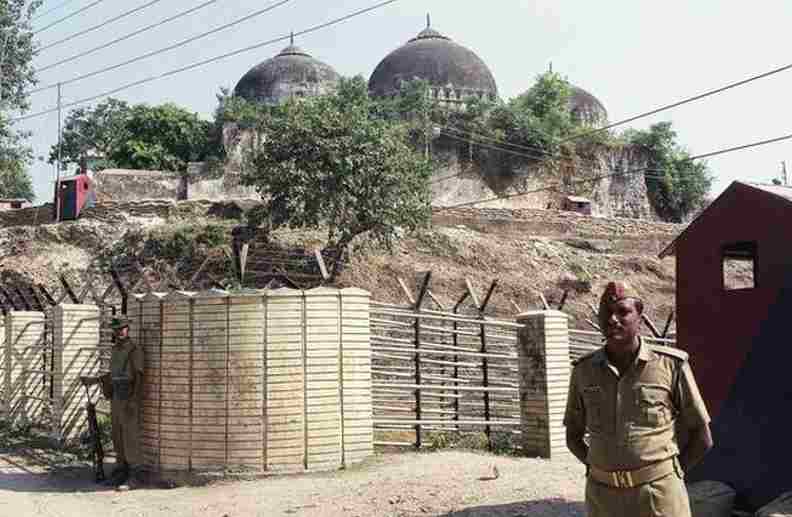
The decision has been made by a five-judge Supreme Court bench which has approved the construction of a temple at the Babri Masjid-Ram Janmabhoomi site in Ayodhya, while also directing the U.P. Central Sunni Wakf Board to be granted a five-acre plot for the construction of a mosque. This decision is the result of a 70-year judicial battle that was anticipated by a 19th-century court issue that was rapidly resolved. The court dispute for ownership of a 2.77-acre plot of the property has come to an end.
Here’s a rundown of the cases, challenges, and developments that led to the Allahabad High Court’s 2010 decision.
A Full Bench of the Allahabad High Court had ordered a three-way partition of the disputed area between the deity Ram Lalla and his ‘Janmasthan,’ the Nirmohi Akhara, an old order of Hindu saints that was maintaining a portion of the area outside the now-demolished Masjid, and the Muslim parties in this judgment. The Supreme Court, on the other hand, invalidated the High Court’s solution as one that “defied logic”.
The core of the issue is the Hindu belief that the Babri Masjid, named for Mughal emperor Babur, was erected in Ayodhya following the destruction of a Ram Temple that commemorated the deity’s birthplace. The Hindu groups desired the property for themselves, claiming that Lord Ram was born in the place where the mosque’s central dome was ultimately erected. The Muslim parties, on the other hand, claimed that the mosque was built in 1528 by Mir Baqi, a general in Babur’s army, without demolishing any house of worship, and that the area was legally theirs because the land rights had not been passed to any other party.
Case Leading To Construction
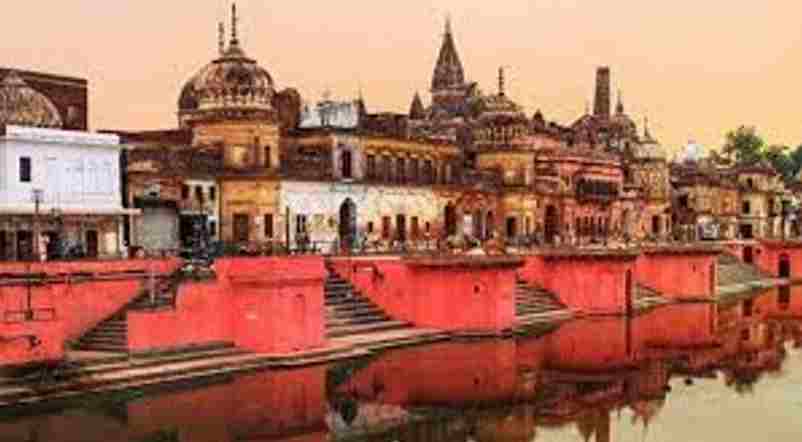
- On November 9, 2019, a five-judge Supreme Court Constitution bench led by Chief Justice of India Ranjan Gogoi unanimously ruled that the property in Ayodhya where the Babri Masjid previously stood belongs to Ram Lalla. The court’s decision put an end to a protracted legal dispute and cleared the door for the construction of a massive Ram Mandir. The Supreme Court has directed the Centre to establish a trust to monitor temple building. It also ordered the government to give the Sunni Waqf Board a five-acre land in a prominent location in Ayodhya for the construction of a mosque.
Dates related to making the land of Rambhoomi dispute
1. 1528-1529: Babur, the Mughal ruler at the time, erected a mosque on the site, which became known as Babri Masjid. The beginning of the conflict in the 1850s resulted in community bloodshed. The Hindu side attempted to take ownership of the place, but the colonial authority refused.
2. 1946: The Akhil Bhartiya Ramayana Mahasabha, a Hindu Mahasabha branch, began a campaign for control of the disputed site. An idol of Lord Rama was discovered within the Babri mosque in 1949. This prompted a Muslim protest, following which both parties went to court and launched a legal complaint. Following the incident, the state administration labelled the entire region a “dispute” and ordered the gates to be locked until further directives were issued.
3. In 1950, the Hindu side filed two civil actions in Faizabad, asking for permission to worship the idols of Ram Lalla. Nirmohi Akhara, claiming to be an investor in the property, launched the third complaint in 1959. The Sunni Central Wakf Board of Uttar Pradesh filed a lawsuit in 1961, requesting that the statues are removed and the site be returned to them. The lock was removed and the doors were opened for Hindu worship on the order of the District Court in 1986.
4. On December 6th 1992, the Babri Masjid was demolished, sparking a conflict between Hindus and Muslims. The Liberhan Commission (Liberhan Ayodhya Commission of Inquiry-led by Retired High Court Judge MS Liberhan) was established by the Indian government to investigate the destruction of the disputed construction of the Babri Masjid.
5. On April 3, 1993, the Centre approved the ‘Acquisition of Certain Area at Ayodhya Act’ to acquire property in the disputed site.
6. On October 24, 1994, the Supreme Court of India ruled in the landmark Ismail Faruqui case that a masjid was not an intrinsic part of Islam.
7. 2010- On September 30, the Allahabad High Court ruled in favour of a three-way division of the disputed area between the Sunni Waqf Board, the Nirmohi Akhara, and Ram Lalla, with a 2:1 majority. The Supreme Court issued a stay order on the Allahabad High Court’s decision in 2011.
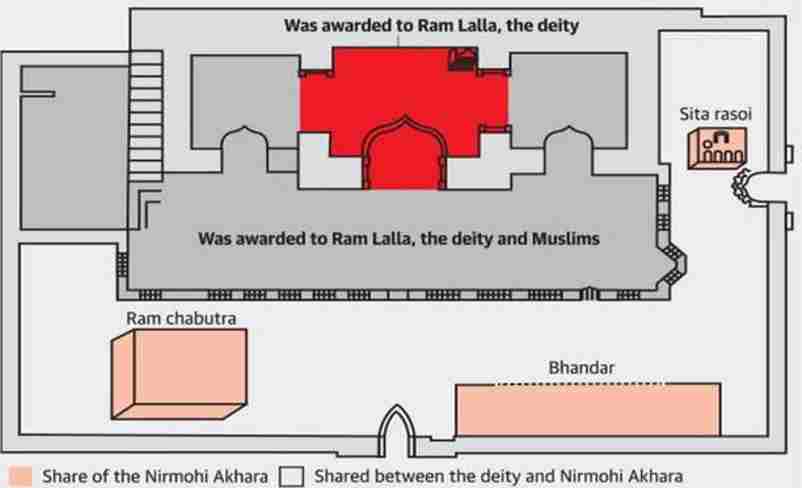
Former Union Minister Subramanian Swamy filed a plea before the Supreme Court in 2016 following the establishment of the BJP administration at the central, requesting the building of a Ram Temple on the site. On March 21, 2017, then CJI JS Khehar proposed an out-of-court settlement to all parties. On August 7, the Supreme Court formed a three-judge bench to hear appeals against the Allahabad High Court’s 1994 decision.5th of August, 2020 PM Modi performs a bhumi pujan at Ayodhya to kick off the temple building and lay the foundation stone.
According to architect Chandrakant Sompura, who designed the Ram Mandir, it would be about double the size of what was initially envisaged. The temple will be built in the Nagara architectural style. It will feature five domes rather than the two originally planned to accommodate a larger number of worshipers. Overlooking the sanctum sanctorum, the temple will contain a shikhara (tower). The temple will stand 161 feet tall, with 16-foot-wide stairwells.
The Ram Mandir is expected to be finished in three years at that time.
Some Books On Ram Janmabhoomi
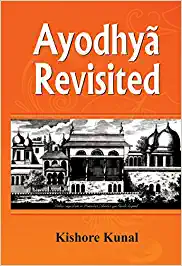

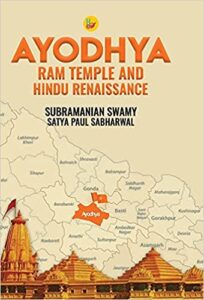
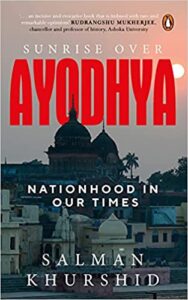
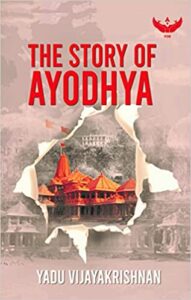
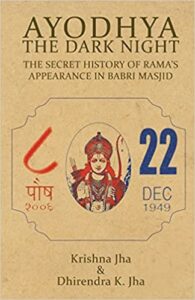
6. Ayodhya: The Dark Night - The Secret History of Rama's Appearance In Babri Masjid
(Krishna Jha)
Top 13 Facts About Ram Janmabhoomi Dispute
Babur came to Ayodhya and halted here for a week. He destroyed the ancient temple and, on its site, built a mosque, still known as Babur’s mosque.
The Vishwa Hindu Parishad declared nationwide to collect stones for the construction of the Ram Mandir at the disputed land of Babri-Masjid.
Meet Mohammed Amir Aka Balbir Singh who participated in the demolition of Babri Masjid, and built 100 mosques.
Legendary Lawyer K Parasaransuccessfully led the Hindu legal fight for Ram Mandir.
According to the Ramayana, Manu, the founder of mankind, constructed Ayodhya, which measured 12×3 yojanas in the area.
Ayodhya is supposed to have 7000 temples, although only about 100 are considered significant.
The Ram Janmabhoomi may be seen near the remnants of the Babri Masjid.
The prayers would cause Lord Ram’s idols on a wooden platform outside to materialize mysteriously in the center of the mosque.
The principal culprit in the FIR filed by Ayodhya Police following the night before the placement of the idol of Lord Rama in Babri Masjid was Abhiram Das.
The Babri Masjid was demolished unlawfully on December 6, 1992, by a huge group of activists from the Vishva Hindu Parishad and other organizations, thus the name “Black Day.”
Rama, the Hindu god of valor and integrity, is one of the most frequently revered Hindu deities.
14 appeals were filed in the Supreme Court against the Allahabad High Court’s ruling in four civil proceedings, which was handed down in 2010.
Ram Mandir symbolizes India’s radical shift towards illiberal majoritarianism, which runs on the idea of maintaining Hindu supremacy in India.



